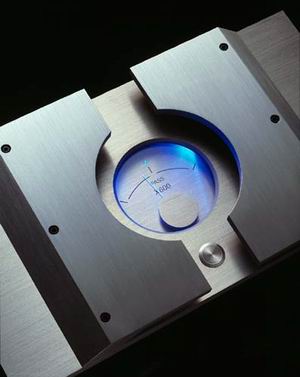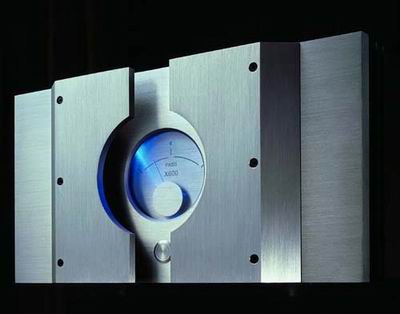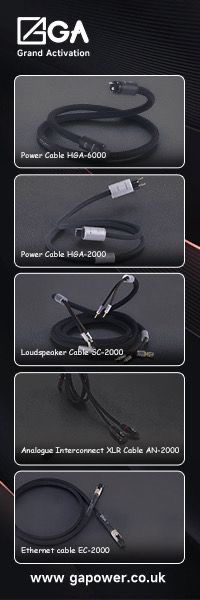Pass Labs X 600 Mono Amplifiers
| Pass Labs X 600 Mono Amplifiers |
|
Power and Then Some |
|
Gregory Petan |
|
10 May 2002 |
 Specifications
Specifications
600 watt per channel solid-state mono amplifier
19″ W × 22″ D × 11.5″ H
150 lbs.
$8000 per channel
Address:
Pass Labs
PO Box 12878
Reno, NV 89510
Telephone: 530-367-3690
Fax: 530-367-2193
Web: www.passlabs.com
These Are A Few Of My Favorite Things
Amplifiers, more than any other component, are one of my favorite products to review and experiment with. Sure a case can be made for any other part of the audio chain. “It all starts with the front end,” has been given mantra status at the alter of high-end. Not to mention the overall consensus that speakers are the most colored and interactive component in the chain, leading to great debates and surrendering to the widest range of personal tastes.
Yet the amplifier, which finds itself smack dab in the middle of the audio food chain, is the engine that makes it happen. And I love engines. From the 350 horses under the hood of my long gone ’73 canary yellow Chevy Firebird Formula (pre tacky body re-design), to the V-12 under the hood of the Mercedes SL 600 that I will never be able to afford, nothing inspires greater sheer macho factor than the mention of big engines — and amplifiers.
Now don’t get me wrong, it’s not just about the “Mine is bigger than yours,” syndrome, though I would be lying if I didn’t admit to loving BIG amps. I do, but I like music even more. So finding an amp that can not only handle the abuse of the volume knob while still delivering the soul satisfying musical goods that I crave has been a real challenge.
|
|
Gentlemen, Start your Engines
Enter the $16,000 Pass X600 mono-blocks. First off, they look flat out killer. Perfectly proportioned, yet massive. Sexy by way of ultra first-rate fit and finish, not to mention those hypnotic blue meters that always beckon me. And a special thanks to the Pass team for rounding off the edges of the heat sinks, removing the chance of multiple lacerations administered by similar designs.
Being an artist by trade and totally unable to leave well enough alone, I plan to customize the faceplate by anodizing the chunky handles that surround the meters in black. This will further accentuate the effervescent effect of the glowing blue meter light. I also plan to nickel plate all of the black hex nuts on the faceplate and top cover. You guys will be able to see pictures of all this when I cover the custom install in a feature I have planned for my system.
As for features, the back panel sports chunky winged binding posts that make speaker wire connections a snap. A 20-amp circuit breaker is provided, as well as a spare set of binding posts for what ever your dirty little mind can imagine. Rated at 600 watts into eight Ohms, the amp runs in pure class A up to 170 watts and runs H-O-T. Passing that point, the meter’s needle begins to gently bounce, signaling the increase of current flow at the outputs. The amp can be put into sleep mode by a gentle touch of a button on the front panel.
Being a fully and truly totally balanced design from input to output, the X600 only accepts balanced inputs, so get used to it. If you want more technical information than should be allowed by law, just visit their site for a dose of full tech overload.
Another nice touch is the owner’s manual that has a nice folksy feel, and makes perfect sense given that the people at Pass are really, really nice folks. Pass Labs is a customer first organization from the top down. I cannot imagine a situation that would leave a Pass customer out in the cold.
Before I dive into the sonics of the X600, I’ll offer a little history of my experience with amplifiers just to put us all on the same page. I have owned and reviewed a lot of amps including products from Threshold, Chord, Bryston and numerous Krells (performance ranging from very good to very mediocre), most recently the FPB600mc. Other amplifiers from Coda (unfairly underrated), the Sonic Frontier Power 3 monos (unfairly overrated) and a couple of iterations of the Jeff Rowland Model 8 design (spectacular sonic performance, but just a tad under powered for my room and speakers). There are others amps too numerous to mention that I have had less quality time with prohibiting and solid conclusions. Most recently I purchased the Pass X3 (to flesh out my home theatre) and have reviewed the X350, so I am very familiar with the Pass point of view.
Now, you are not going to hear me go on and on about how the X600 blows away all that have come before it. Few products have left me completely breathless, save the Linn Sondek CD12, and perhaps the Talon Audio Khorus X speakers. Most products that have impressed did so by highlighting parts of the spectrum, providing for some truly inspired musical moments. What I will say is that with the X600 in the chain, my system has never sounded more balanced, free of coloration, convincing and inspired. The stiffest competition to date has been found in the Rowland 8TiHC, particularly in the area of truth of midrange timbre and treble purity, not to mention that it is the most beautiful amplifier I have ever seen.
Let me peel this grape by stating unequivocally that, If you are going to enjoy what I have been enjoying with the X600, pay very, VERY close attention to what is hooked up to the X600, both coming and going. These amps are startling in their neutrality and transparency and they do not appease the misgivings of associated gear. Now I understand not everyone is going to be able to get his or her paws on a Linn Sondek CD12, which is worth every penny of the very steep $20k asking price. Yet I know people that will spend more than $20k on interconnects and speaker wire, yet produce a turd when confronted with the Linn’s price! Go figure. My point is that you should take your time and choose the most musical and refined ancillary components you can afford…. no forget that. Go into debt. As deep into dept you can possibly rationalize! You won’t regret it. In your search, avoid anything that is bright, particularly in the upper midrange and lower treble. By the time the signal navigates its way through the X600 and finds its way into your room, I promise you will not regret your investment.
If you are moving up to the X600 from an amp with lesser prowess, please be prepared for a serious shock when you drop the laser on say, the final movement of the Fritz Reiner/CSO Scheherazade [RCA 68335-2]. Coupled to the Talon Khorus X, which possess the smoothest and most dynamically capable upper-midrange and treble of any speaker I have heard, this music absolutely shot into the room as if fired from a cannon. From the deepest tympani strikes to the cataclysmic cymbal crashes that drive home the finale, the X600 remained totally composed. They were both outrageously explosive yet easy on the ear without a hint of grain. High frequency energy never offending the senses, they remained crystal clear while resolving boatloads of non-fatiguing detail. With a full compliment of MIT Oracle interconnects and speaker wire, the X600 produced sounds free from the electronic artifacts that, even in subtle forms, prove distracting, particularly at real world, non-audiophile approved levels.
When swingin’, the X600’s dynamics are never offered at the expense of a stable soundstage or image specificity. As complex music grows from loud to furious, the 600s remained totally coherent and stable. Images never collapsed, musical threads never obscured, quite the contrary. The X600s actually allow the instrument’s image boundary to expand via harmonic bloom. Perhaps not to the degree of some tube amps I have heard, or the Rowland 8TIHC, but much like a real instruments or voices do when pushed to greater and greater dynamics. Most solid-state amps, some of very high pedigree not to mention wattage, tend to over-grip, even pinch the image as power is applied. This form of compression, once eliminated, allows you to move one step deeper into the musical looking glass.
The one area the X600 may fall short is in the ultimate portrayal of image depth. Images are a tad less round and fleshy than through, say, the Rowland 8TiHC or some of the better tube amps I have heard. The action and vocal projection from Track 5, “Sunrise,” from the Grateful Dead’s Terrapin Station [ARCD 8065], an absolutely beautiful piece of music, was lighter in touch, more see through than dense. This characteristic takes root in the middle of the mid-range and follows through into the treble. On the positive side, music takes on a lightning fast dexterity, lithe and nimble, never bogged down under the weight of blurred transients or opacity.
And this dexterity is not limited to the upper registers. From the upper bass to just above the deepest reaches, the X600 remains nimble, transparent and finely focused. Bass notes cut and turn, creating sudden palpable shifts in air pressure, much like that experienced in live music. Lesser amps, particularly at high volume levels, tend to loose their grip on bass transients, creating a rhythmic disconnect between the bass and the rest of the spectrum. The mid-bass follows suit, though compared to the Rowland 8TiHC, which possess the most colorful and potent mid-bass I’ve yet heard (up to its dynamic limitations), the X600 favors precision over bloom.
So were does this leave us? It leaves me with a big ass smile on my face. It leaves you wondering how to scrounge up the not insignificant sum of $16k to share in said smile.
Lightning quick, grain free and as transparent, or more so, than anything I have heard, as well as musically satisfying, the X600 is a truly great amplifier. At the very least, find yourself a dedicated Pass dealer who has put forth the time and effort to get the best out of Nelson Pass’ great creation. It could well be the last pair of amplifiers you will ever buy.
![]()
Don’t forget to bookmark us! (CTRL-SHFT-D)
One thought on "Pass Labs X 600 Mono Amplifiers"
Leave a Reply
Stereo Times Masthead
Publisher/Founder
Clement Perry
Editor
Dave Thomas
Senior Editors
Frank Alles, Mike Girardi, Russell Lichter, Terry London, Moreno Mitchell, Paul Szabady, Bill Wells, Mike Wright, and Stephen Yan,
Current Contributors
David Abramson, Tim Barrall, Dave Allison, Ron Cook, Lewis Dardick, John Hoffman, Dan Secula, Don Shaulis, Greg Simmons, Eric Teh, Greg Voth, Richard Willie, Ed Van Winkle, Rob Dockery, Richard Doron, and Daveed Turek
Site Management Clement Perry
Ad Designer: Martin Perry






The definition, or lack thereof in the x600 mono mid range, can be compensated with a great preamplifier such as the Coda Fet X07 !!! Trust me.